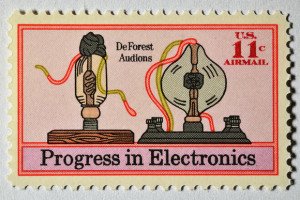Room For Error
Lee De Forest was the inventor of the first amplifying vacuum tube. In a digital world it is hard to fathom that it all started with the development of this device. This led to radio, television, and the first computers.

When De Forest created his first version, a two filament vacuum tube, his theory on why it worked later proved to be wrong. The “breakthrough” came with the addition of a third filament which allowed for the signal to be amplified. De Forest then built a second flawed theory on top of his initial theory. He was later quoted as saying “didn’t know why it worked, it just did.” Needless to say patent litigation followed.
Similarly medieval navigators were able to use the sun and stars to sail ships over much of the world, even though many at the time believed the world was flat and the sun orbited the earth.
We have written about the role of luck or chance in development.
It seems we even have to provide room for error too.
While the nice phrase for this is paradigm shift, we have to ask — how tolerant is your organization around error and failure?
